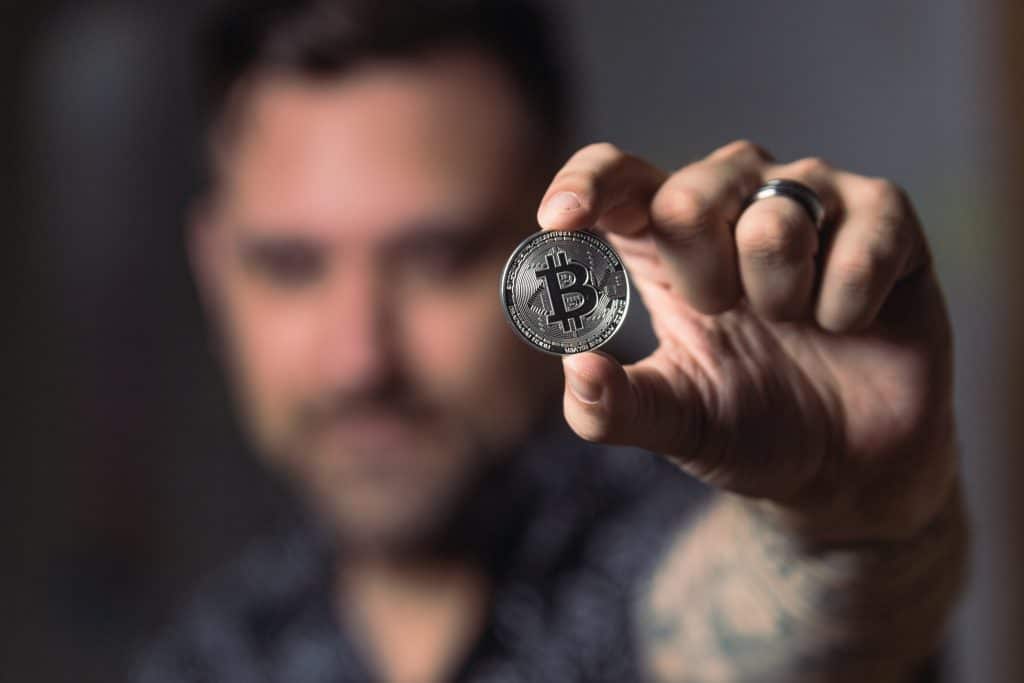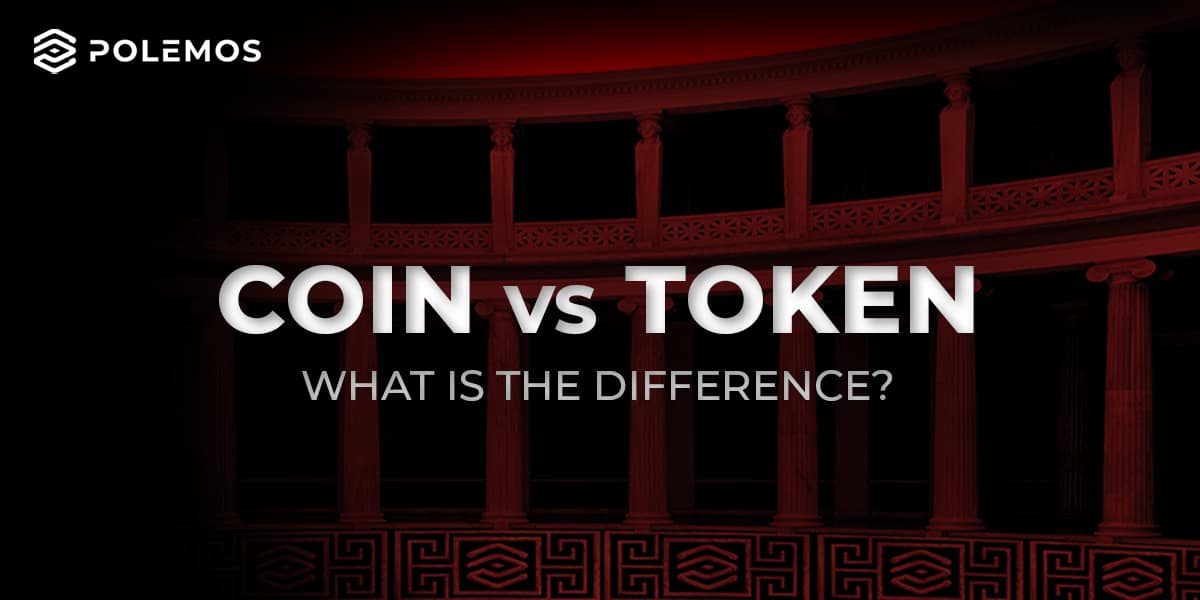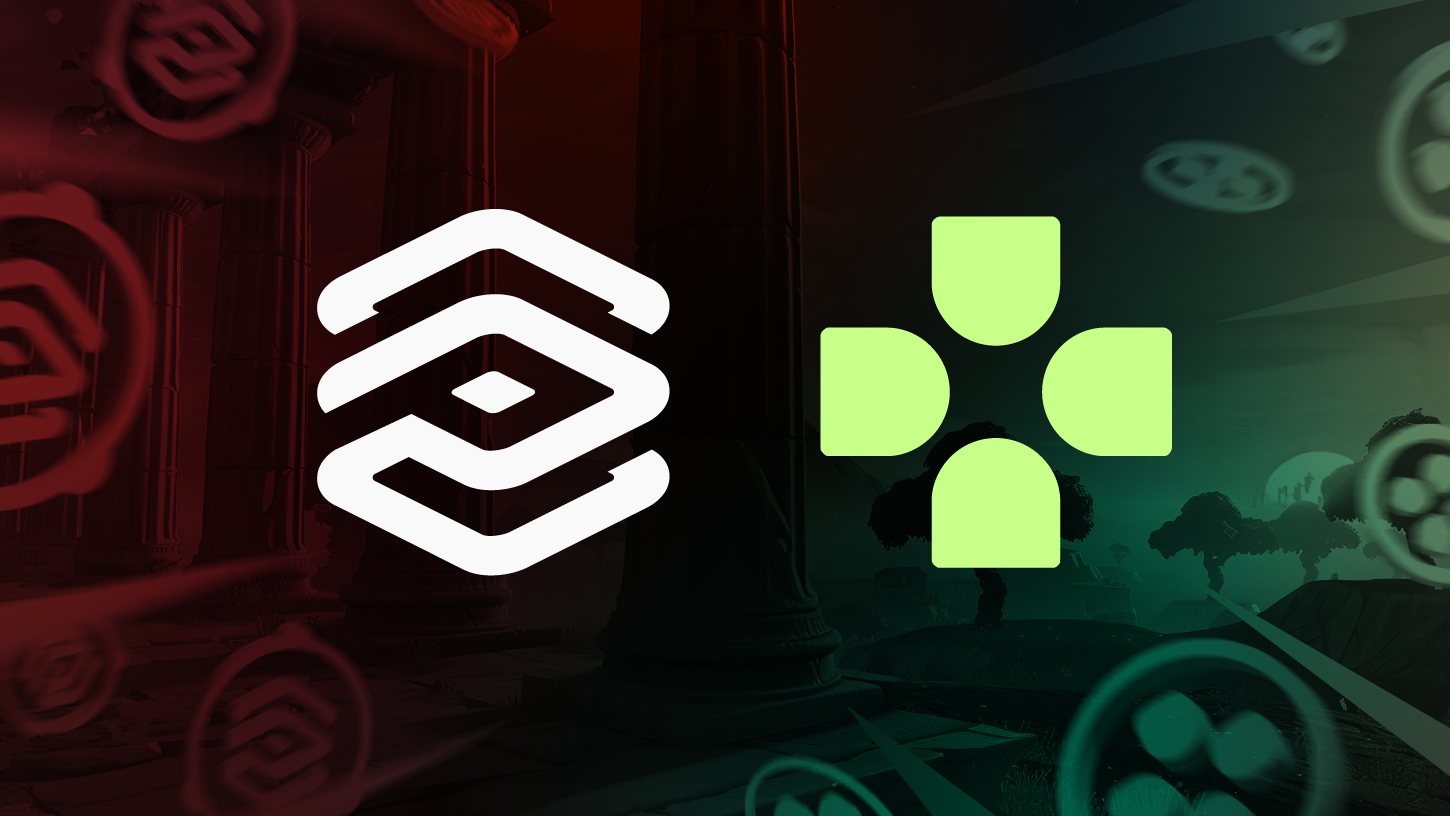The difference between a coin and a token resides in the structure of the asset and its purpose in the market.
Coins and tokens share some similarities. They both reside on a blockchain, meaning they require the whole infrastructure behind them to run and function as decentralized items.
Table of Contents
What is a Crypto Coin?

A cryptocurrency coin is an asset on the blockchain whose sole purpose is to mimic a real-life currency, such as euros. Crypto coins require an intense infrastructure to maintain their value. Therefore, all crypto coins have a dedicated blockchain.
For example, Bitcoin (BTC) is a cryptocurrency coin representing the Bitcoin blockchain. Maintaining a coin’s value is very challenging and requires a total supply to be defined—this is why central banks for USD and EUR don’t follow this structure.
There is no fixed supply of EUR, USD, or other fiat currencies. Banks can print money, change bank accounts, and update the values of users’ accounts without any problems. All of this is completely impossible on the blockchain.
The blockchain is balanced due to a predetermined, limited number of coins; in order for someone to be able to gain 100 BTC, someone else must remove 100 BTC from their wallet. In addition, all transactions are publicly recorded via wallet addresses, and the value of a coin depends on how many holders are out there and how they decide to transact.
Crypto coins can only be exchanged on their own network. For example, you can’t send ETH from an ETH wallet to a BTC wallet. If you want to exchange ETH for BTC, you will need to do that on an exchange, which will keep your ETH and release some of the BTC they have in their pools.
You can only exchange ETH for BTC if the exchange has enough BTC in its liquidity to satisfy your requirements. For example, If you want $1 billion in BTC, it is likely the exchange won’t have such a large amount and will decline the request.
Key Takeaways
- Coins are used for all transactions in a blockchain.
- Coins are strictly related to one blockchain, and you need an exchange to swap coins from different blockchains.
- The sole purpose of a coin is to represent a transaction.
- All transactions are publicly available on the blockchain.
- All major coins have a total fixed supply.
What is a Token on the Blockchain?

A token is a smart contract on a blockchain that can serve one or multiple purposes. For example, NFTs are tokens usually hosted on the Ethereum or Solana blockchain.
The reason that minting an NFT requires the payment of tokens is that the NFT itself is simply renting a portion of the blockchain for the transactions. When you mint, you pay rent, better known as a gas fee, to the network that is giving you the infrastructure to complete the transaction.
Tokens have a variety of uses, but they all have the same underlying code. Tokens can thus be exchanged within chains without issues. For example, if a game creates two tokens, $TKNA and $TKNB, users will be able to exchange A for B without going through an exchange. That is because although the contract is different, both tokens are on the same network.
Tokens can be deployed to multiple chains. You can deploy $TKNA on Ethereum, Solana, and Algorand. This is the whole concept behind cross-chain NFTs. This is where it gets tricky, though! What if a token is used for transactions? Would it then become a coin? Is this the main difference between a coin and a token?
Tokens Used as a Coin
Tokens can be used as coins—particularly in the gaming industry. Most games on the blockchain do not have a coin, but one or multiple tokens, hence the name “Tokenomics”.
However, just because a token is used for transactions does not mean it is a coin. A coin always relates to a blockchain network. A token is always “hosted” on a blockchain; they don’t create nor represent the blockchain itself.
For example, let’s take $TKNA from before. Imagine that you set the total supply of $TKNA to 1,000,000 and host it on Ethereum. If you want to send $TKNA to another wallet, that wallet will have to be on the Ethereum blockchain, and you will need to pay Ethereum for the gas fees.
All the nodes that validate the transaction will be rewarded in Ethereum. No one in the process will receive rewards other than Ethereum, the blockchain’s coin.
Key Takeaways
- Tokens are much easier to manage and create than coins.
- Tokens are not necessarily used for economical purposes. They can store any sort of data: images, papers, signatures, videos, audio, and much more.
- When used for transactional purposes, tokens still behave differently than coins and usually require a gas fee in the blockchain coin in order for the transaction to go through.
- If two tokens have the same underlying code, they can be swapped on the same blockchain network.
- In regards to the difference between a coin and a token, tokens do not have to strictly abide by supply and demand. A token can have an unlimited supply.
Coin Vs Token
To wrap things up, you can picture coins as the currencies of Web3 and tokens as assets built with blockchain technology. Both are important to make the internet progress and become more decentralized, but they serve different purposes.
Most of your activities are likely going to relate more to tokens than coins, and this is the main difference between a coin and a token. Because it is such a labor-intensive and complex process, most games will never create their own blockchain or coin.
Delegating the coin structure and blockchain to Ethereum, for example, allows tokens built on it to share the same code, be exchanged internally easily, and don’t require a BA in Finance to make it happen.















